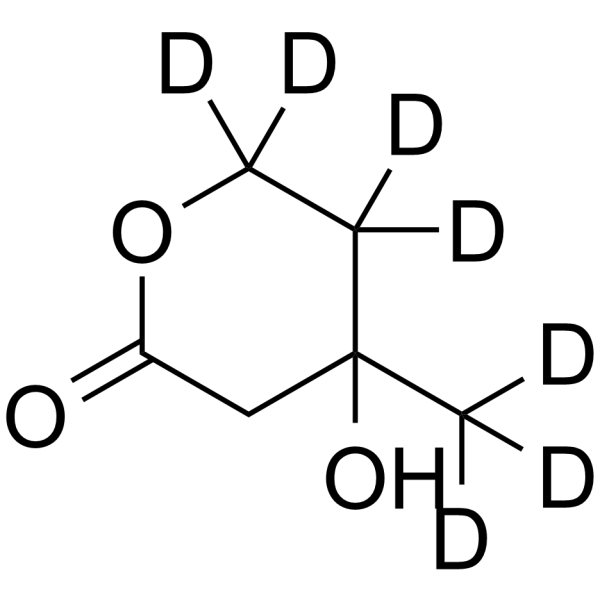DL-Mevalonolactone-d7
Modify Date: 2024-01-04 11:41:13

DL-Mevalonolactone-d7 structure
|
Common Name | DL-Mevalonolactone-d7 | ||
|---|---|---|---|---|
| CAS Number | 347840-19-1 | Molecular Weight | 137.18500 | |
| Density | N/A | Boiling Point | N/A | |
| Molecular Formula | C6H3D7O3 | Melting Point | N/A | |
| MSDS | N/A | Flash Point | N/A | |
Use of DL-Mevalonolactone-d7DL-Mevalonolactone-d7 ((±)-Mevalonolactone-d7) is the deuterium labeled DL-Mevalonolactone. DL-Mevalonolactone ((±)-Mevalonolactone) is the δ-lactone form of mevalonic acid, a precursor in the mevalonate pathway. DL-Mevalonolactone (Mevalonolactone) decreases mitochondrial membrane potential (∆Ψm), NAD(P)H content and the capacity to retain Ca2+ in the brain, besides inducing mitochondrial swelling[1][2]. |
| Name | dl-mevalonolactone-4,4,5,5,6,6,6-d7 |
|---|
| Description | DL-Mevalonolactone-d7 ((±)-Mevalonolactone-d7) is the deuterium labeled DL-Mevalonolactone. DL-Mevalonolactone ((±)-Mevalonolactone) is the δ-lactone form of mevalonic acid, a precursor in the mevalonate pathway. DL-Mevalonolactone (Mevalonolactone) decreases mitochondrial membrane potential (∆Ψm), NAD(P)H content and the capacity to retain Ca2+ in the brain, besides inducing mitochondrial swelling[1][2]. |
|---|---|
| Related Catalog | |
| In Vitro | Stable heavy isotopes of hydrogen, carbon, and other elements have been incorporated into drug molecules, largely as tracers for quantitation during the drug development process. Deuteration has gained attention because of its potential to affect the pharmacokinetic and metabolic profiles of drugs[1]. |
| References |
| Molecular Formula | C6H3D7O3 |
|---|---|
| Molecular Weight | 137.18500 |
| Exact Mass | 137.10700 |
| PSA | 46.53000 |
| LogP | 0.07440 |